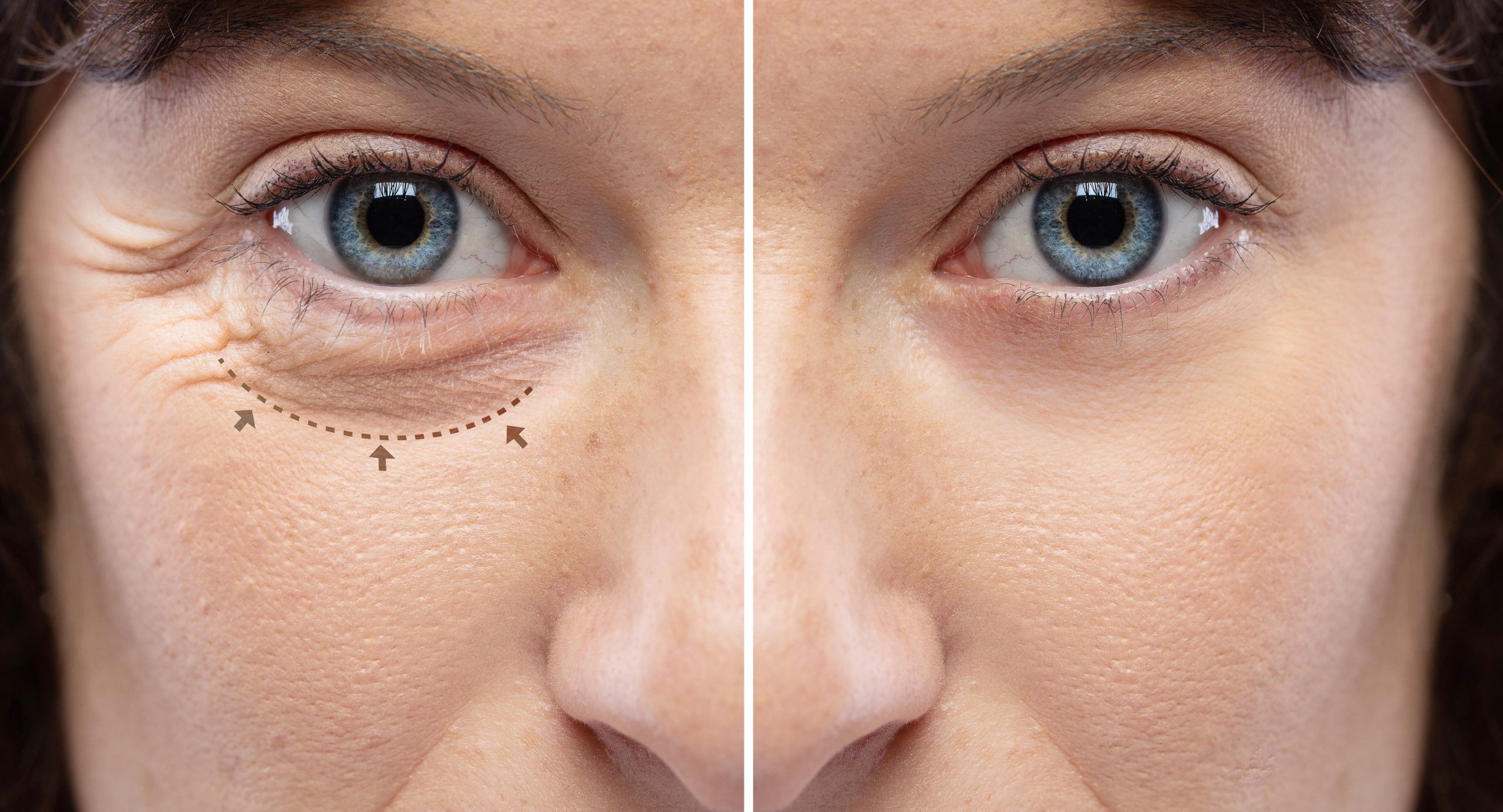

The Procedure
Eyelid surgery is usually done on an outpatient basis using either a local anesthetic with sedation or general anesthesia. The surgery can take from 1 to 3 hours, depending on whether both the upper and lower lids are modified.
During surgery on the upper eyelids, the surgeon marks the natural creases and folds of the eyelids so he or she can make the incisions along those lines, hiding the scars in the folds. He or she makes the incisions and removes or repositions the surplus fat, muscle, and skin. When working on the lower eyelids the surgeon makes an incision either along the eyelash line or inside the lower lid, which leaves no visible scar, and trims away the excess fat, muscle, and skin. He or she then uses fine absorbable stitches (which do not have to be removed) to sew the incisions closed. Scarring from the incision will be hidden in the natural folds of the lids.
After Blepharoplasty Surgery
If you have had eyelid surgery, you can expect to have bruising and swelling, especially at the corners of your eyes, for about 2 or 3 weeks. A feeling of tightness in the eyelids is normal, and some people feel as if their eyelids are so tight, they cannot close their eyes, but this feeling usually goes away in a few weeks. You will probably have some pain or discomfort. Your eyes may feel dry and may burn and itch for a few weeks, and you may have double vision or blurred vision during the recovery period. You may also have increased tearing and sensitivity to light and wind. In very rare cases, the lower eyelid can pull down and turn outward, requiring further surgery or longer recovery time to correct. The main risk after eyelid surgery is infection. Your doctor may prescribe an eye ointment to relieve drying, and pain medication to minimize your discomfort.
To immediately relieve some of the swelling, gently apply cold, wet cloths to your eyes. Keep your head elevated at all times—even while sleeping. Carefully clean your eyes every day as your doctor recommends to get rid of any sticky residue and to prevent infection. Don’t wear contact lenses for at least 2 weeks after surgery or until your doctor says it is OK to do so. You probably can begin to read or watch TV 2 or 3 days after your surgery and you will probably be able to return to work within a week. But avoid strenuous activity, such as jogging, until 1 or 2 weeks after the procedure.
